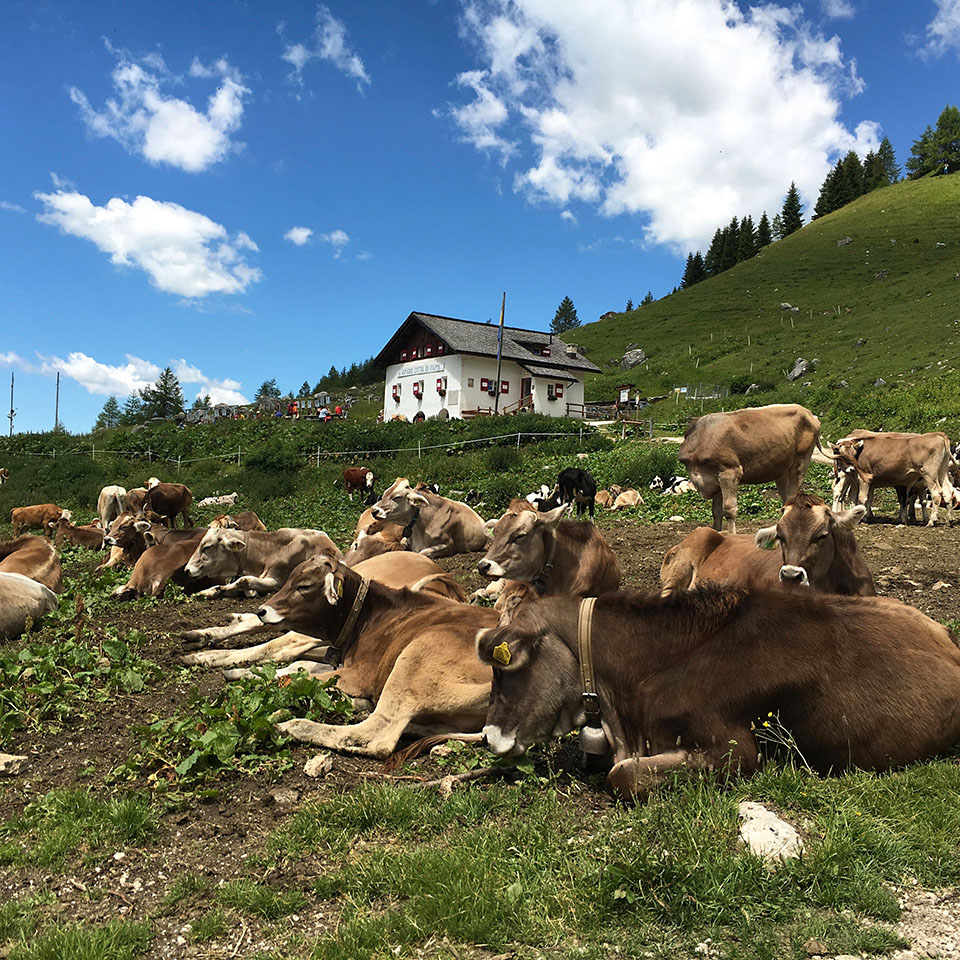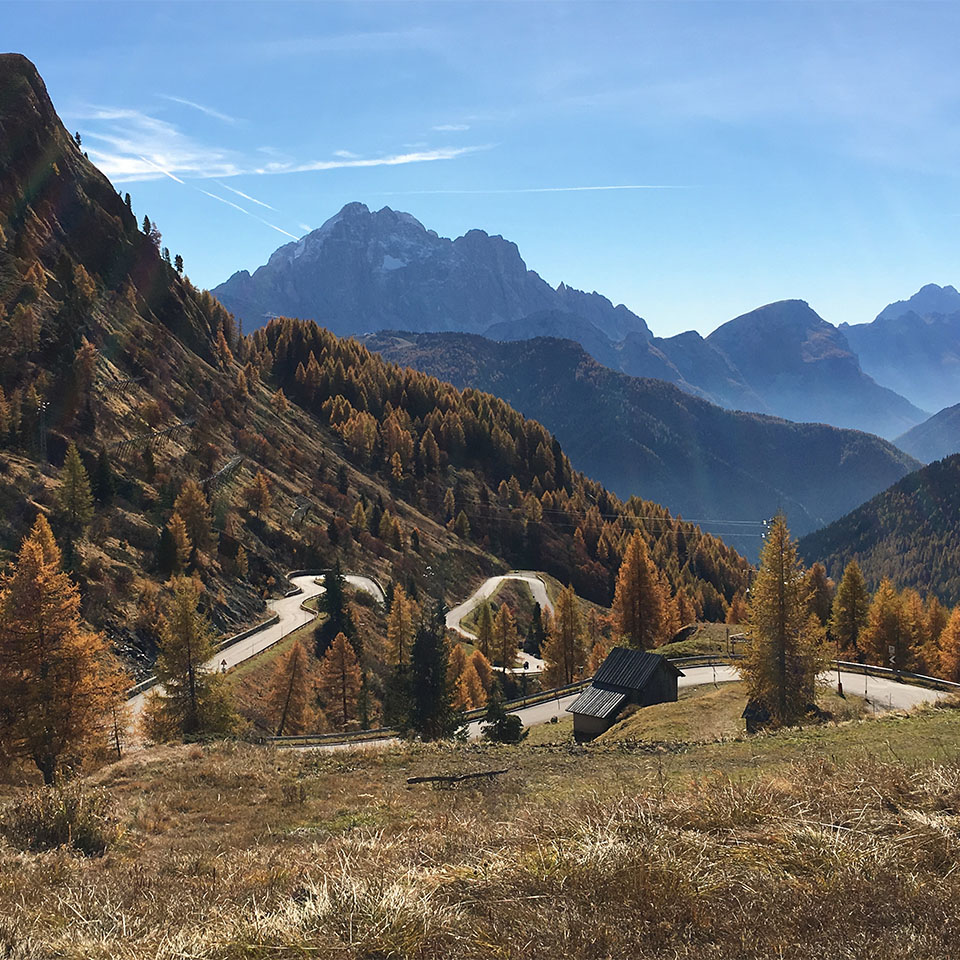
The possibilities for hiking and climbing are unlimited. From simple walks between the villages to appealing day trips in the high mountains. The walks to Lago di Coldai and Croda di Lago are beautiful, as are those around Averau and towards Fanes. The most challenging hikes are those along the Via Ferrata (literally translated ‘iron road’). These were constructed during the First World War.
With the most famous mountain passes right at your feet, Casa Tie is the ideal base for cyclists who like challenges. With Passo Giau, Passo Pordoi, Passo Gardena, Passo Valparola and many more, you can gain unlimited height in a mountain world of unrivalled beauty. The Val Fiorentina also has an extensive network of mountain bike routes. The Transalproute runs almost literally past our house.


With 1200 km of slopes, the Dolomiti Superski is the largest ski area in the world. Our ski area Civetta with 80 km of slopes is part of this huge area. By car or bus you can easily reach the other areas of Dolomiti Superski. So you can make a day trip to the Sella Ronda or do the Gran Guerra tour. Cross-country skiers will find plenty of opportunities for all levels at Pescul and Palafavera.
In 1987 a Mesolithic cemetery was discovered above the Val Fiorentina. The finds from the Middle Stone Age, including a skeleton, are known as the Mondeval man. The official language in the Dolomites is Ladin, an ‘archetypal’ language with its own tradition and stories. Until after the First World War (1923), the border with Austria was in the Val Fiorentina (formerly Buchenstein). It is therefore not surprising that some people still speak German.
